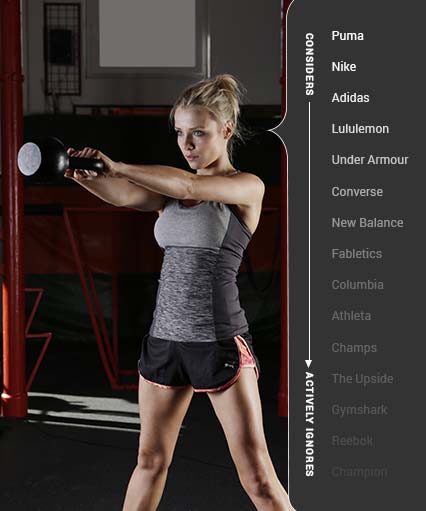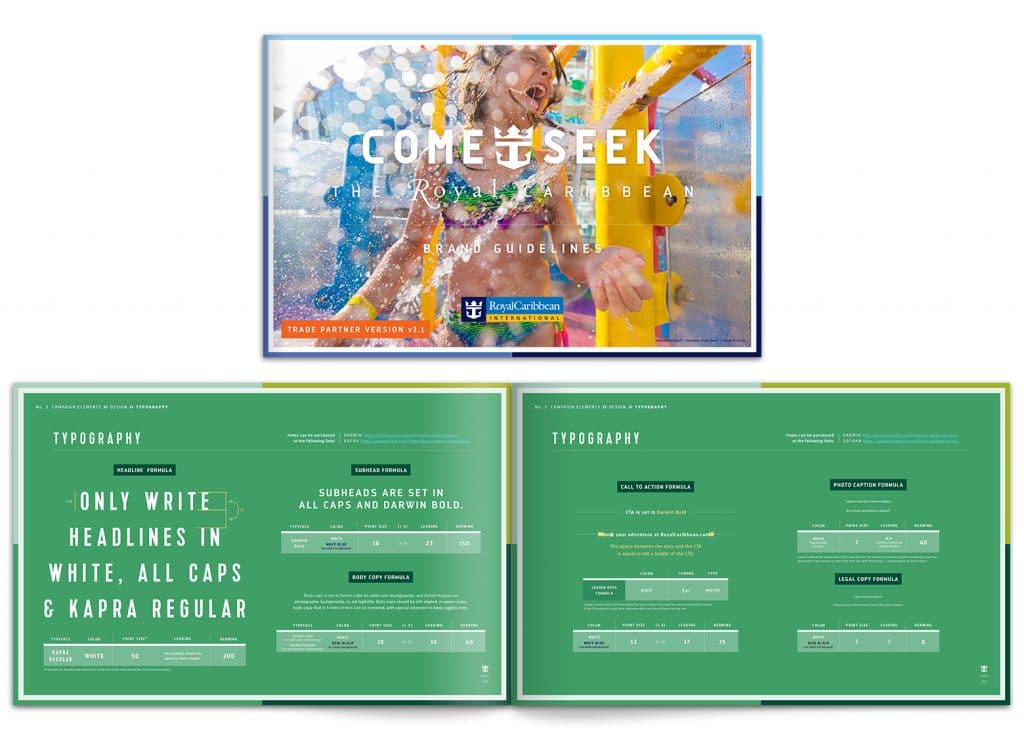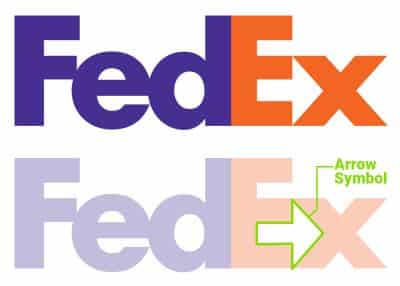There are some brand names you recognize the minute you hear them. Creating a well-known brand isn’t only for large corporations. You can probably think of at least one lawyer in your area right now because they’ve branded themselves in an interesting way, e.g., Joe “The Hammer” Harabi, attorney at law!
A smart and unique brand helps you stand out from the competition. The memorability of your brand determines whether people will think of it when they are in need, and the authenticity of your brand determines whether people trust you with their hard-earned dollars. A survey of marketers and business owners by Gartner found 67% see branding as a critical driver for the way prospects behave.
What are the steps to take when creating a recognizable brand? You don’t necessarily have to spend a lot of money to compete with more prominent companies. A noteworthy brand will do the heavy lifting.
Get Noticed
According to the Small Business Administration, there are around 31.7 million small businesses in the United States. Although not every company is your competition, you are still vying for attention from a limited number of customers against a nearly unlimited number of businesses.
Standing out from the crowd requires knowing your target audience. Success will come from understanding what things speak to those people and creatively finding ways to get your image in front of them repeatedly.
Brands That Get Noticed are Relevant, Unique and Strong
The prerequisites for a brand to be memorable.
Once you understand your typical buyer, it is easier to figure out what their pain points are. What is the problem driving them to seek you as a solution? Knowing the issue your users face allows you to ensure your brand is relevant, and all your marketing is on point.
Look for ways to stand out from other businesses. What is your unique value proposition (UVP)? And how can it be highlighted? How can you use powerful action words to make a bold statement? Is there a guarantee you can offer to show you believe in your product and stand behind it?
Relevant Brand
Relevant brands speak to the values of their customers.

People notice marketing that is offering a solution to problems or aspirations that are top of mind for them.
For example, you usually ignore all ads for cars, but they become quite interesting when your car breaks down, or your lease is up. Or you may not notice of the ads for outdoor adventure brands like The North Face or Arc’teryx, but your co-worker who is an avid camper takes note of all of those ads.
A person’s unique value hierarchy determines what they are motivated for how they act. We talk about brands breaking into that value hierarchy in “The Power of Branding” article here on BMB.
How do you create a brand that is relevant to customers’ needs and values?
Start by surveying your current client base and talking to customers one-on-one. Ask them: what do you prefer? Do you have any needs other providers or we aren’t meeting? Do your best to fix any issues you spot.
Stay on top of new trends and meet consumer demands before they even know they have them.
Apple does an excellent job of this with its iPhone. It unveils a new version every year, highlighting the changes it’s made that match new tech trends or improves the phone in some way. Apple explains how the new tech will make a big difference in what people care about.
Unique Brand
Unique brands are unlike the other companies in both look, story, and offering.
The first level of being unique is making sure the visuals representing your organizations are different from most. Develop a unique logo, choose distinct colors, and don’t use the standard fonts everyone uses. Bonus points if these unique choices match the tastes of your ideal customer.
The second level is offering a product/service suite that is different than the competitors. If a potential customer can get exactly what you offer from some other business, then why should they buy from you? If you provide exactly what everyone else in your product category does, then you cannot expect great results.
As we discussed before, what is your unique value proposition (UVP)? What about your products and services can customers only find with you? You need a UVP so overpowering that it can’t be ignored.
The final level of uniqueness is having a story and vision that connects people to your brand on an emotional level. Tell your audience why you started your business and what your mission is. Spend time going into the details of your most significant challenges and biggest successes.
When you share your experience on an emotional level, your target audience will connect with you. Don’t be afraid to laugh, cry, and inspire. Share through videos, by talking to local groups and on your website.
Strong Brand
Up your game; make your brand consistent across the board.
A strong brand is consistent across the board. They have the same look, language, and feel in different locations and communication channels.
This coordinated effort means all parts of the business are working to build the same brand. Strong brands push their message with more force than weak brands. Strong brands are more memorable.
You can strengthen your brand by following a style guide and fostering authenticity.
Style Guide
A document to share with people who work on your brand to make it consistent.
The easiest way to ensure you send out the same message is by creating a style guide. A style guide offers details on a brand’s color palette, sets forth when and how to use the logo, and can even define your brand’s tone and personality.
Think about how you want the outside world to see you and specify your preferences in a style guide. No matter who works on marketing, they’ll have the outline for how to proceed.
Making the use of fonts consistent across the organization is an excellent example of how a style guide can get everyone on the same page. To get a taste of what a style guide can be, read BMB’s article: Typography in Brand Guides: How 17 Brands Use Fonts.

Authenticity
Be consistent. Be yourself.
A natural source of consistency is authenticity. It is hard to be inconsistent when you are simply yourself.
Never try to be something you aren’t. Your brand has a unique personality. People want authenticity in the companies they patron.
In an article by Forbes, reporter Michael Fertik shares that consumer trust is at an all-time low. Part of the reason is scandals from big companies such as Facebook and the New York Times. Another reason is the lack of data security and billions of consumer files falling into hackers’ hands.
Your job is to gain the trust of buyers and assure them you mean what you say. Start by writing out your personal and business philosophy and training others in your company to abide by those standards. If you make a mistake, own up to it immediately and explain the fix. Be open and honest, and people will come to trust your brand.
The Enemy: Generic Brand
Grey, bland, and boring: a generic brand cannot possibly garner attention.
A generic brand is one that uses the same message as others in the field. The colors aren’t unique, and the logo isn’t anything special. It may be seen as a less desirable version of well-known brands or a cut-rate option. If you don’t offer anything special, people have no reason to remember who you are or share what you do with their contacts.
The easiest path to be a generic brand is to be the same as your competitors. Brands naturally become similar to others in the industry because the people behind the brand came from other companies in the field. We readily believe ‘what worked for them will work for us.’
But there is no pathway to a great brand where the brand is similar to its competitors; people will always choose the original over the copy. It takes a concerted effort to present a unique brand image.
Being unique starts with understanding what is out there in the industry. Knowing your competition helps you craft a unique value and explain why you offer a superior experience.
Research other companies in your industry. What symbols do they use in their logo? What colors do they use? Do they provide anything you do not? How can your offering exceed theirs? What niche customers are they focusing on, if any?
Researching the competition is not so you can copy them, quite the opposite. It is so that you can find smart ways to differentiate your brand and offering.
Get to know how your competition advertises, their approach to customer service, and their UVP. Go undercover as a customer and figure out the ins and outs of their relationships with their clients. The more you know, the better able you are to compete.
If the core elements of your brand are too bland, your brand didn’t get the best start, or some aspect now has a negative connotation, rename your brand, rework your logo or make other changes. For example, if you bought a company from someone else and then found out they stole money from former clients, it’s probably a good idea to change your name and tagline.
Recognizable Brand Identity
What makes one brand’s identity recognizable over another’s? Your first step is creating a list of your competitors and taking notes on their branding. What colors do they use, and what is their unique value proposition (UVP)?
Next, think about what you stand for and how you can share that through color, brand voice, and taglines. Does your logo define who you are? When people see your logo, name, or colors, does your business immediately come to mind?

The Olympics is one of the most iconic and recognizable brands in existence. Not only is their logo unique and filled with meaning, as the circles represent the countries of the world coming together, but the images they put on their website and in advertising have a theme. They always show an athlete at a moment of extreme effort and perseverance.

McDonald’s is known for their fast, cheap food. They’ve made their yellow arches so recognizable that even small children point them out and want to eat there. They accomplished this by repetition. The yellow arches appear in their storefront signs, on product packaging, and in advertisements.

Ford Motor Company is known for their blue oval. The dark hue indicates a long history of doing business with American consumers. The color blue is also often used by financial institutions as it builds trust. When someone sees the blue oval on a car, they don’t even need to read the name to know it’s a Ford vehicle.
Recognizable Brand Logos
It’s hard to remember a generic logo. It’s easy to remember a unique logo.
Some logos are so generic they could work for diverse businesses such as a bank or a bar. A unique logo speaks about what type of business it is, why that particular company is distinctive and stands out from competitors’ images.
Start by choosing a style. You can go with a modern design or something vintage. Use images, words, or a combination of the two. Once you know the type of style you want, come up with one action you’d like to associate with your brand.

For example: add a sense of motion to your logo to be seen as the fastest in the industry. Think about brands such as FedEx, where the logo features an arrow.
What separates a unique logo from a generic one? A distinctive logo utilizes the brand’s color palette. It doesn’t look like it could suit other industries and stands out from other similar businesses. A logo is something you use in nearly every interaction with consumers, so it must speak about who you are as an organization and what you provide consumers.
Recognizable Brand Colors
A unique color pallet is the easiest way to separate your brand.
When you think of a brand such as UPS, you think about brown and gold. Coca-Cola brings to mind red and white. These brands have colors intricately tied with their products. The brown makes sense for a package delivery company as most boxes are brown. The red lends an edge of excitement to the beverage.
The colors of these brands now seem normal, but at one time, they were someone’s unique and bold choice. A unique color pallet will become associated with your brand in time, and any other brand would look foolish if they copied them.
How do you decide on the right colors for your brand? Start by studying the psychology of color and what emotions evoke different feelings. A dark blue is reassuring and trustworthy, while green brings to mind nature and finances. Consider how the majority of your target audience views a particular shade.
Once you have two or three hues in mind, look at the color palettes of your competitors. Your brand needs to be unique, even if just by choosing a different shade within the same color family or by adding a unique accent or two.
Think about the colors used by McDonald’s. Not many restaurants use gold in their logo — most lean toward red or green. The unique choice makes the logo stand out.
The blue oval for Ford lends an air of reliability and tradition. The Olympics’ symbol uses specific colors meant to convey meaning, such as friendship, strength, and competition.
BMB is here to help you choose unique colors that work together for your brand. We have a guide on how to choose colors for a brand with six considerations, and we suggest 45 color palettes that look great and are culturally relevant right now.
Stand Out on Social Media
Develop and practice a unique voice on social media.
Get active on social media. Interact with your fans and build relationships with your current customers. Share the things they post, give a shoutout when someone shares your content, and hold contests to reward them for activity.
Do not use the generic “public relations voice” that 99% of companies use. No one connects with it because it sounds so reserved and artificial.
Develop a brand voice unique to you. Define your brand personality. BMB has a guide to Brand Voice which helps you define a writing style and coordinate copywriters in four steps.
One-On-One Relationships With Salespeople
Our brain is not wired to remember brands, but it is wired for relationships with other people. We can remember five thousand faces! (Science Magazine.)
As effective as marketing and branding are, our brands will never be as memorable as one-on-one interactions with salespeople naturally are. If you want to be memorable, then you also need to build one-on-one conversations whenever possible.
Start with your top clients who place substantial orders frequently. Reach out to them with a phone call. Invite a few of them to a luncheon, and ask them if they’ll tell others about you. Word-of-mouth marketing is one of the most powerful tools you have in building a brand name.
Map sales zones in each area and make sure you cover all potential customers. One big mistake smaller businesses make is trying to do too many things at once. By focusing on a nearby area, you can offer personalized customer service.
Send reps out to talk to people face-to-face. Train them to mention your name. Mail flyers and postcards to the neighborhoods on your map to make sure they know who you are and what value you bring to their lives.
Conclusion: Make an effort to be memorable and see the results.
Our natural inclination is to keep our heads down and fit in. It takes fantastic people or a concerted effort to stand out from the crowd. Be brave in your efforts to be unique and memorable.
Track mentions of your brand on social media and pay attention to online reviews. Define and track some key performance indicators (KPIs) so that you can know if your efforts to be memorable are paying off.
With a little effort, your brand will soon become a household name.
BONUS! Infographic

This infographic was contributed by Golden Rule Signs.

Leave a Reply to Workik. Cancel reply